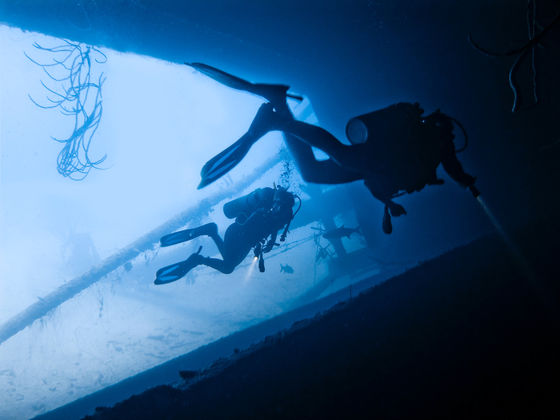An 80-year-old sunken Nazi warship continues to pollute the ocean with toxic chemicals

A research paper has been published that ships used by the Nazi German Navy that sank in the 1940s are releasing toxic chemicals that cause marine pollution.
Frontiers | 80 years later: Marine sediments still influenced by an old war ship
After 80 years, a Nazi shipwreck is causing environmental damage | Ars Technica
https://arstechnica.com/science/2022/10/nazi-warship-is-still-doing-evil-to-the-environment-this-time/
A Nazi Shipwreck Is Leaking Toxic Chemicals Into the North Sea
https://www.vice.com/en/article/xgy7zq/a-nazi-shipwreck-is-leaking-toxic-chemicals-into-the-north-sea
- Originally a German fishing boat, it was requisitioned by the navy of Nazi Germany and was active as a patrol boat in the 13th Outpost Fleet based in Rotterdam [ John Mann (V1302)]. John Maan was sunk by RAF bombing on 12 February 1942.
John Maan wasn't the only ship sunk by RAF bombing. A new research paper has been published that chemical substances that cause environmental destruction are leaking from coal and ammunition that sunken ships including John Mann were loaded. The study points out that the coal, ammunition and various heavy metals in the wrecks are leaking pollutants. This suggests that the surrounding environment is changing at the microbial level.
The study was published as part of the Interreg VB North Sea Region Programme , a project to help identify and mitigate the environmental impacts of wrecks in the North Sea.

One of the study's authors, Josephine van Landuit, said: 'We are interested in how old shipwrecks in parts of the ocean shape the local microbial community and how it influences the surrounding sediments. 'We wanted to see how it was impacting the human body. This microbial analysis is particularly unique within the project.'
Shipwrecks in the North Sea not only carry a myriad of chemicals and materials that can affect marine ecosystems, but the hulls themselves are also composed of such chemicals. The hull also includes
As a result of analyzing the sample, we found chemical substances called polycyclic aromatic hydrocarbons (PAH) among the compounds contained in explosives, as well as heavy metals such as nickel and copper, as well as arsenic, coal, and gasoline. Higher concentrations of heavy metals and PAHs have been found near the wreck, according to the research team.
The presence of the sunken ship also affected nearby microbes. Microorganisms such as ' Rhodobacteraceae ' and ' Chromatiaceae ', which are known to degrade PAHs, are often detected in areas with high levels of contamination. In addition, it seems that many microorganisms that work to corrode steel have been detected in the steel collected as ship samples.

At the time of writing the article, it is unknown how the microorganisms, which are often detected near the sunken ship, affect the surrounding environment. However, high levels of copper can be toxic to marine life. Further investigation is also required on the case where heavy metals in the sea affect the marine food chain, are taken up by organisms such as fish, and bioaccumulate when humans eat the fish.
It is said that there are about 50,000 sunken ships in the North Sea other than John Mann, so Mr. Randuit said, ``We don't see old sunken ships in our daily life, and where are they? I don't know, but it's possible that they're polluting our marine ecosystems, as they erode over time and become released from confined spaces, posing risks to the environment. It could even be higher,” he said.
Related Posts:
in Science, Posted by logu_ii







